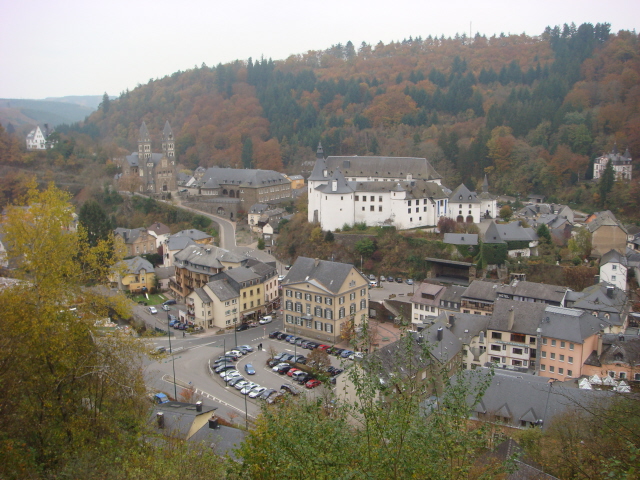Hi guys
Well it hase been a while since I posted here and as most of you are in the States and will most likely not have the option to visit all thos sites, , I thought to show you some photos of my last Stand where they fought Tours. Once again I went to the sites of the Bulge - Southern Flank and on the tracks of the 5th FJ Division.
The first shots show the tiny Luxembourg town of Bigonville.
Bigonville
On December 13, 1944, about 250-300 american soldiers lived in the village. They were on a rest to pass the winter in Bigonville. US Engineer units are working in the area (1128th Engineer Combat Group, 299th Engineer Combat Battalion, 1278th Engineer Combat Battalion) On December 21, 1944, elements of the 5th FJD attack Bigonville from the North. December 23, 1944: The Combat Command Reserve, 4th Armored Division and supporting units (578th FA Btl., 188th Engr. C. Btl.,145th Engr. C. Btl., 249 Engr. Btl..) are engaging the German Fallschirmjaeger outside the village, to the South. On December 24, 1944 after 3 days of bitter fighting, CCR and supporting units capture Bigonville. Men of the 5th Fallschirmjaeger like Horst Lange surrender in the morning around 9 A.M to men of the US 37th Tank Btl. and 53rd Armored Infantry, Combat Command Reserve, 4th Armored Div. On December 25, 1944, The sector turns under control of the 26th Infantry Division. The sector is used as rear combat zone. Artillery batteries are set up and a Field Hospital is opened in Perle.
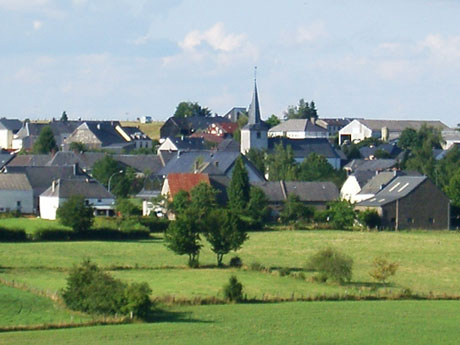
On Dec. 21, 1944 the Fallschirmjaeger of the 15th FJR had 4 mortars palced in this garden. On Dec. 23, 1944, those mortars and their crews stopped 4 US counterattacks which have been started from the Flatzbour crossroad to get Bigonville back in US hands (Photo by Mr Lange)
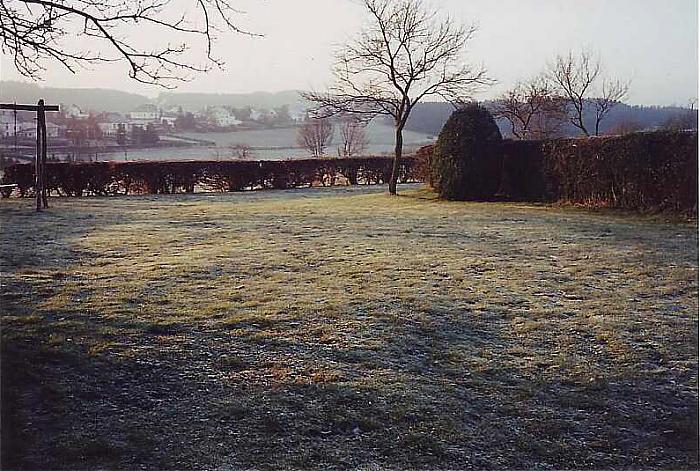
Battle at the crossroad Café
The Battle at the crossroads Café in Poteau de Harlange was an Alamo stand by ragtag remnants of the US 687th Field Artillery Battalion which helped slow the Wehrmacht juggernaut at the Battle of the Bulge.
Retreating from Wiltz and en route to Bastogne, the US 687th Field Artillery Battalion endured a night its men would never forget in tiny Poteau de Harlange. The country crossroads was the site of the chaotic firefight on December 19, 1944, between the US 687th and the German paratroopers of the 5th Fallschirmjaeger Division.
The precise location of the brief battle was a longstanding source of confusion until a GI-turned-amateur historical sleuth set the record straight. Many veterans and bookwrites placed the battle at Café Schumann. Bob Phillips, a veteran of the 28th Infantry Division's 110th Regiment wrote "To Save Bastogne" and also placed the battle at the Schumann crossroad. Les Eames,who, as lieutenant in the 687th, had played an integral part in the battle, got more and more convinced, that the official record was wrong. So in 1989 Eames returned to Luxembourg, using several maps and worked closely with aleading local expert. In this process, they established beyond a shadow of a doubt that Poteau de Harlange was the actual battle site.
Eames and the local expert then persuaded Phillips of this, and Phillips redressed the error in a subsequent version of "To Save Bastogne".
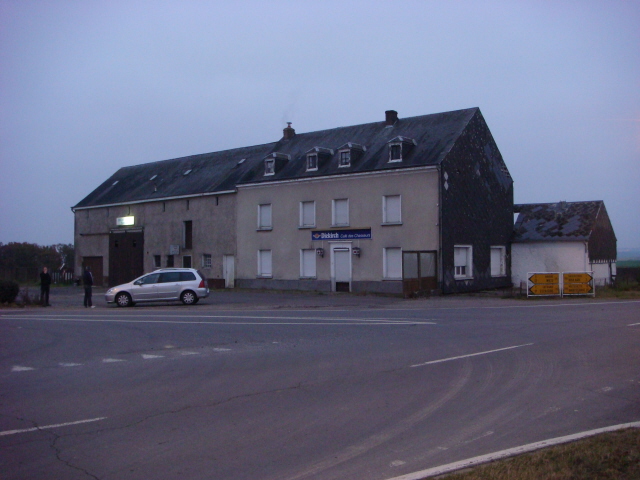
Today, the small crossroads appears little changed. The Café burned down during the battle but has been rebuilt, and a small chapel has been erected nearby to honor the brave veterans of that small battle. The view is in direction Bigonville.
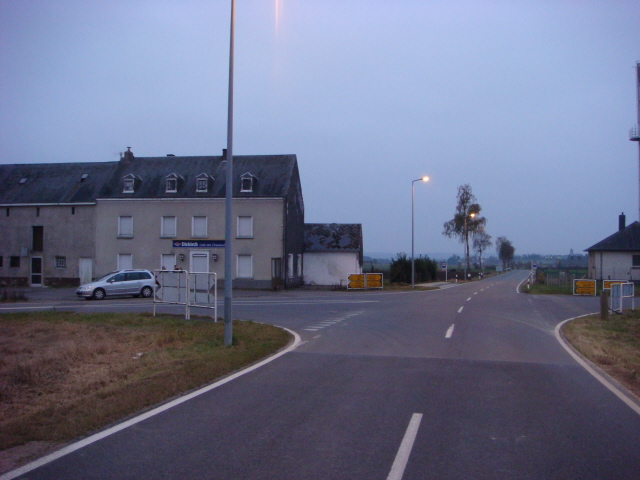
This is a 8.8 cm Pak 43/41 L anti tank gun and is situated just outside Noertrange.
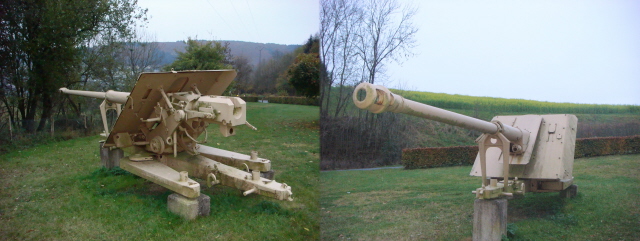
The "Bazooka Boogie" Memorial of the 28th Infantry Division Band who helped to defend Wiltz.
The only artillery pieces to be seen in the Bulge today are German.
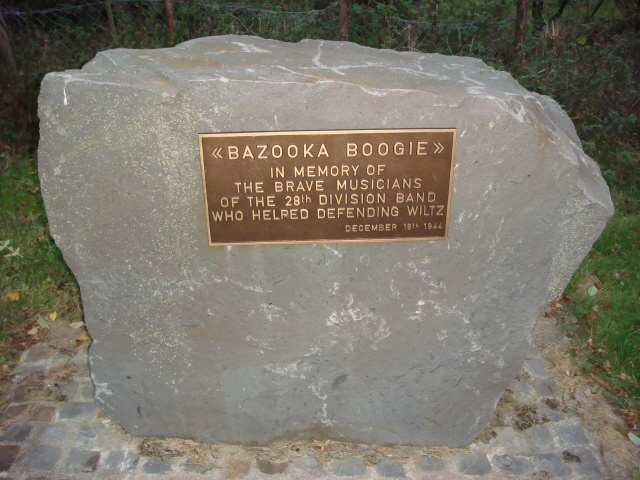
The train station of Wilwerwiltz was the headquarters of the US 707th Tank Battalion until it was overrun on December 17, 1944.
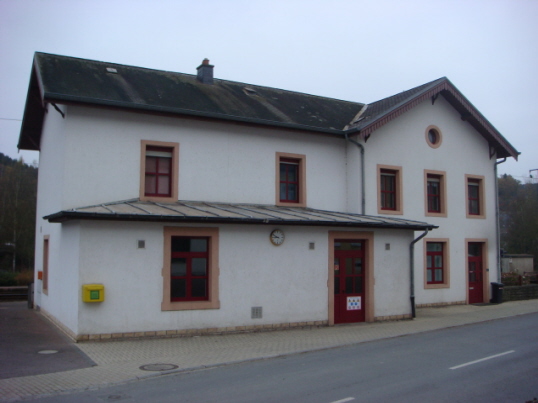
Hosingen
On December 16, 1944, Hosingen was attacked but US control of this village was impeding the German march westward. In fact, the Americans entrenched in Hosingen were in a position to block all approaches to the locality from the east, north and south through well-directed antitank gun and mortar fire. As early as noon on December 16, US resistance by the 10.5 cm howitzers of Battery C, 109th Field Artillery and the tank platoon in the area between Hosingen and Bockholz had temporarily thwarted Grenadier Rgt. 77 drive to the Clerf River. And now the US attacks from the front, right flank and the rear were all taking their toll on the Germans.
Grenadier Rgt. 77 decided it needed Hosingen badly. Earlier German attempts to break US resistance at Hosingen had managed to get a toehold in the southern edge of the village, but so far had made no further progress. But that was not enough. Hosingen must be taken and taken quickly. The German command realized that the western exit road from the Gmünd bridgehead was the main divisional supply route to the Clerf River, and it was hopelessly blocked unless the Americans could be driven from Hosingen.
The hope of a quick breakthrough of the 26th VGD or the 5th FJD in the 110th Infantry Rgt. Sector had proven illusory. The German Infantry would have to fight for every yard they gained and pay a high price in casualties for each and every one of those yards. Hosingen only fell on December 18, 1944 after bitter fighting.
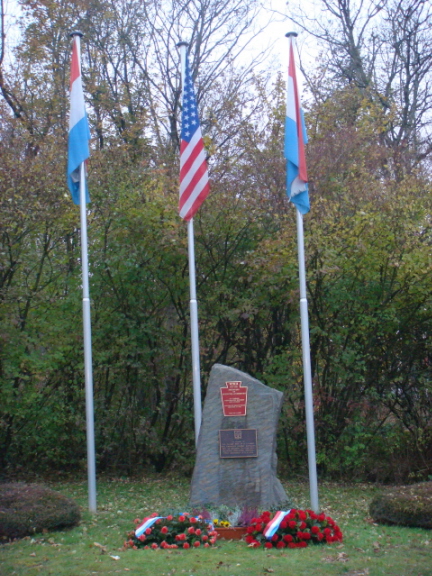
At the junction of "Skyline Drive", the main route from Diekirch to the Belgian border, and the road from Hosingen to Bockholtz, over which the attacks of 27 January, 1945 jumped off, is the Memorial of the men of the 702nd "Red Devils" Tank Battalion. Ralph R. Wardle And John W. Kelly. K.I.A. when their tank plunged off of an ice-covered cliff during the Battle of the Bulge in Luxembourg. Erected by their comrades and Platoon Leader, Lieutenant Milton Still
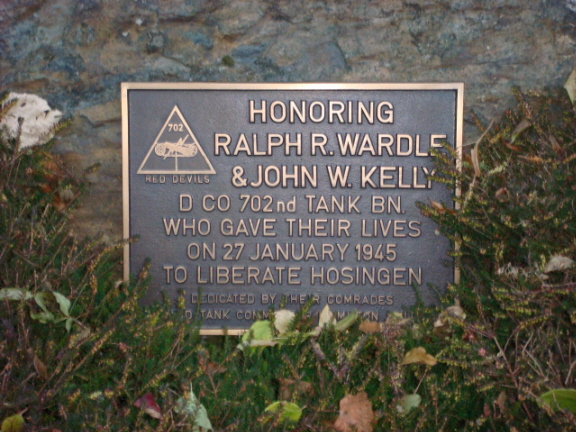
The German 2nd Panzer Division drives for Clervaux
This was a main objective of von Manteuffel’s tank drive on Bastogne because of its strategic location on the main highway leading to Bastogne. So Colonel von Lauchert, commander of 2nd Panzer, was concerned about the division’s slow rate of advance. Clervaux should have fallen before noon on the 16th according to the original German timetable. Instead, it was still holding on the morning of the 17th, with no indications as to how soon German forces would be able to secure it.
Clervaux fell on December 18, 1944. The 2nd Panzer Divisions timetable was so badly disrupted at Clervaux that there was no longer a question of who would win the race to Bastogne. That the race to secure Bastogne as quickly as possible was ultimately lost by the Germans was primary the result of the desperate holding action by the US 110th Infantry and its supporting units in front of and at the Clerf River crossings
